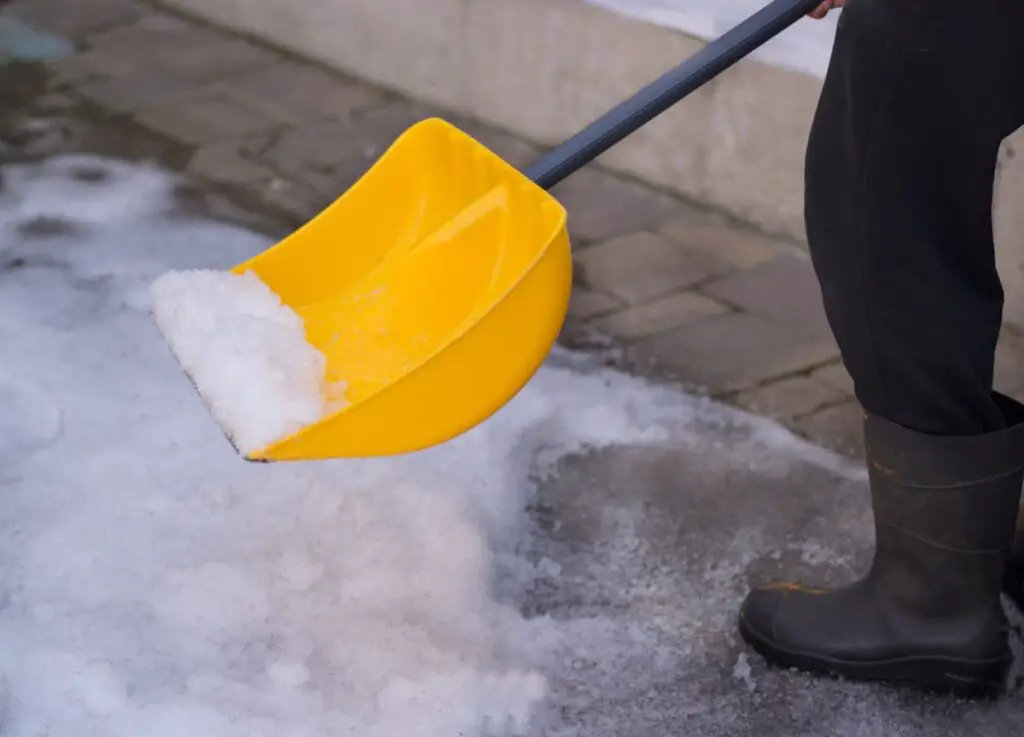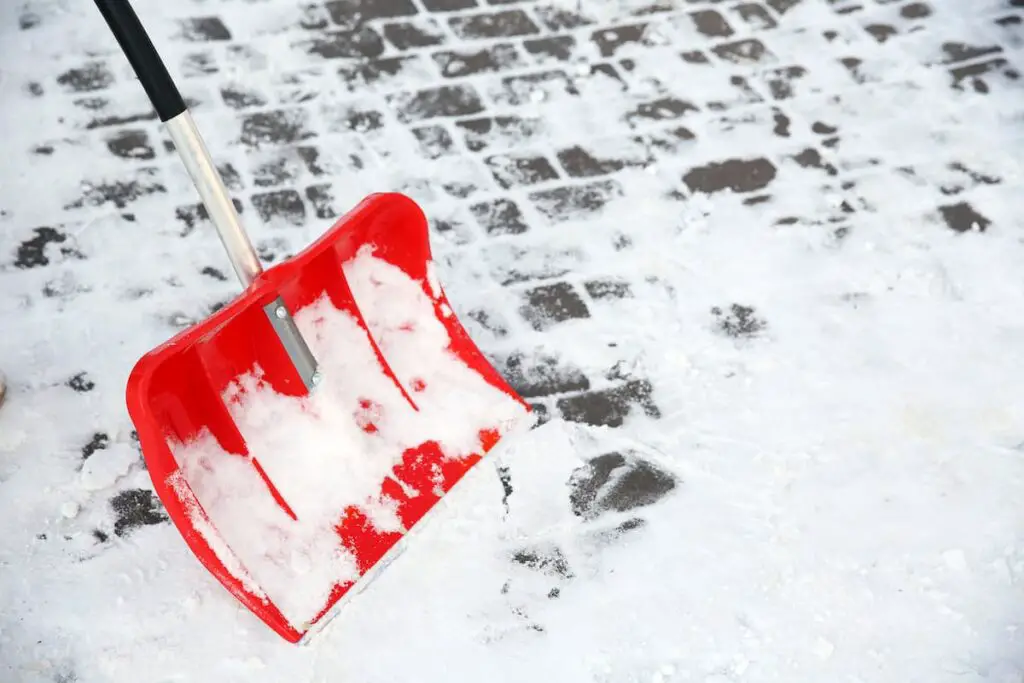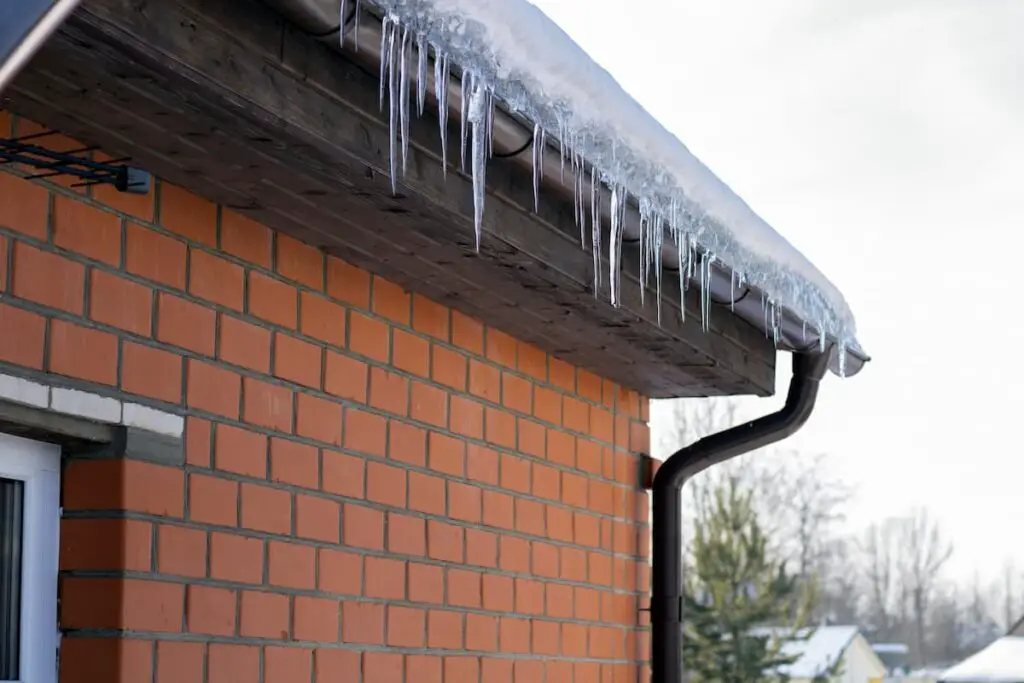As an Amazon Associate, we earn from qualifying purchases. We may also earn commissions if you purchase products from other retailers after clicking on a link from our site.
Freezing rain is forecasted, and you already have a couple of inches of snow. To keep the snow from piling up further, you grab your shovel or snow blower. But is it a good idea to clear sidewalks and driveways before freezing rain?
You should not snow blow or shovel before freezing rain. If you do, the rain will turn to ice and cause your driveway or walkway to be slippery. Instead, you should wait until the freezing rain or sleet finishes falling and then clear your pathways.
This article will explore what causes freezing rain so you know why you should wait. You will also get some tips on clearing the snow after the rain has finished and how to prepare for freezing rain.

What Is Freezing Rain?
Freezing rain happens when water droplets fall through a thin layer of cold air. The water doesn’t have time to turn to freeze or turn into snow in this thin layer. Instead, when it hits the cold ground, it freezes into ice.
Black ice is an example of what happens when freezing rain hits a cold, hard surface. It’s formed by freezing rain or when the snow melts and refreezes. Although it’s commonly referred to as “black ice,” it’s clear, so the black we see is, in reality, the pavement on the road.
On concrete sidewalks, we simply call it ice, but it’s the same slippery stuff. Since we can see it, it’s a little less dangerous.
However, as many of us know, falling on ice hurts and can lead to an injury.
Sleet is similar to freezing rain. The main difference is that the layer of warm air is slightly thicker, which allows the rain to freeze before it hits the ground. The end result is the same—ice on a road or sidewalk.
What Happens if You Clear Snow Before the Freezing Rain Falls?
If you clear the snow before freezing rain or sleet falls, you run the risk of creating a slick surface of the ice. The one exception will be if the ground is warm enough that it would melt the ice.
This is an extremely rare occurrence, and should it happen, then the meteorologist wouldn’t call for snow.
Therefore, clearing snow before a freezing rainfall leads to paths, sidewalks, and driveways covered in ice instead of snow. And you are less likely to slip on snow since your shoes can press into it, creating friction that won’t exist on ice.
So it would be best if you left the snow on the ground. It might turn to slush, which is far more walkable than ice.

Clearing the Snow After the Rain Has Finished Falling
Once the freezing rain or sleet has fallen, it’s time to think about maybe clearing the snow. Since your goal should be to make a surface walkable, you’d consider several variables before picking up your snowblower.
- The amount of snow you have.
- The temperature of the air and ground.
- Whether you have prepared your surface for ice.
The amount of snow matters. If you have one to two inches of snow and the temperatures are going up, the ice will create a wet slush that will turn into ice when the temperature drops at night.
In that case, you’d clear your pathways before they ice over. Salting your pathways will help keep ice at bay.
If freezing rain lands on four or more inches of snow, it forms a crust. You can clear the snow if no additional rain is forecast, but it isn’t essential. Just remember that packed snow weighs more than the fluffy stuff.
Snow cannot form unless the ground temperature is below 41℉ (5℃). But snow will not melt as soon as the temperature rises above freezing. It can take several days of temperatures in the high 40s to melt 2 to 4 inches of snow.
In other words, if the temperature stays in the low 40s, the snow won’t melt quickly either.
The final consideration is how much you’ve prepared the ground for snow. If you haven’t de-iced the sidewalks or driveway, removing soft, mushy snow is recommended to prevent ice buildup. So if you only have several inches of snow and don’t expect the temperatures to melt ice, this would be the time to head outside with your snow blower or shovel.
How Can I Prepare for Freezing Rain?
To prepare for freezing rain, pretreat your driveway with ice melt, rock salt, or a similar product. Pretreating the driveway weakens any ice that tries to form and makes removing any possible snow or ice after a rainstorm a breeze.

Don’t worry about the icy rain washing away your deicers. Because of the characteristics of ice and snow-removal chemicals, it takes more than a few rain or snow showers to wash them away.
Rock salt and similar de-icers work because they lower the freezing point of water. This works due to the scientific principle that some solutions keep water from freezing at 32℉ (0℃).
The salt or other de-icer ingredient prevents the water molecules from becoming solid ice crystals at 32℉ (0℃). The amount of deicer chemicals in the solution determines at what temperature water will freeze.
Here are some good ways to prepare for freezing rain:
- Add an abrasive: Concrete rusts, cracks, and deteriorates as a result of chlorides. You’ll want to combine a deicer with an abrasive, such as sand, to lessen the quantity of salt on your pavement while still providing traction.
- Layer it: When applying any form of ice melt on concrete, lay down a thin coating of it. Then apply another after a storm.
- Throw away the salt when it melts: A plant can only absorb a small amount of salt. So minimize how much of the salty slush you put on the grass. And don’t leave it on the driveway. So after the snow has melted, sweep it away. Then again, if you have several storms coming at once, you may want to leave the salt where it is for a while.
Bottom Line
Before freezing rain, don’t shovel or use a snowblower unless you want a slick surface. The rain will turn to ice, making your driveway or sidewalk slipperier than if you had left the snow. Instead, wait and clear the paths after the rain has stopped falling.
